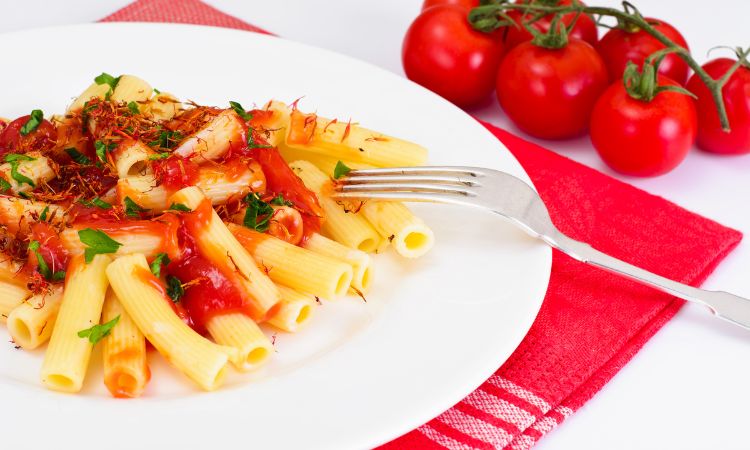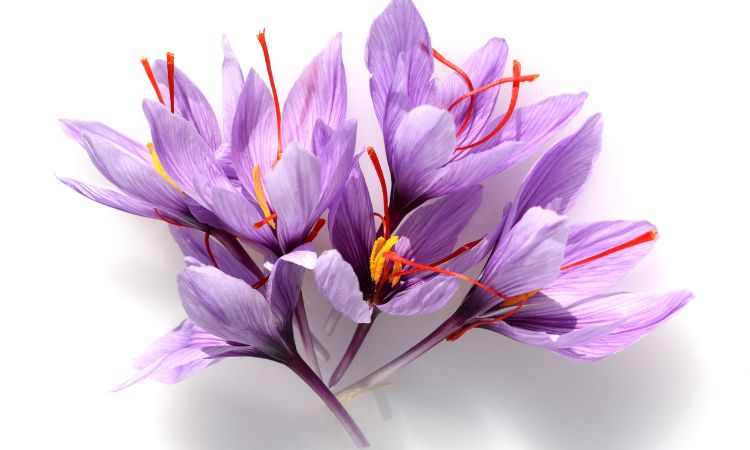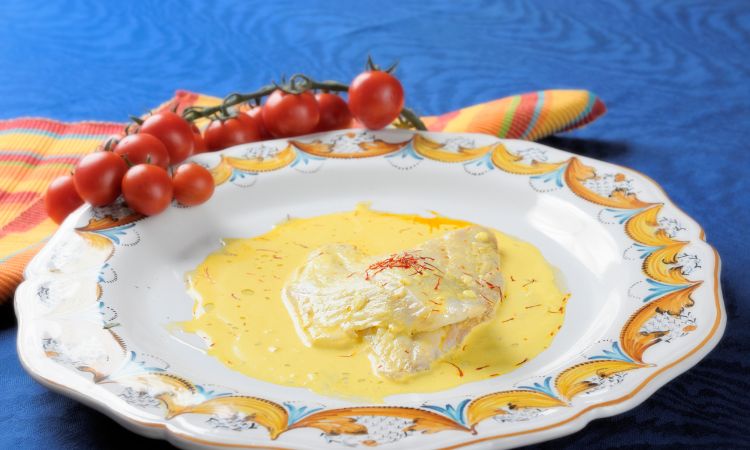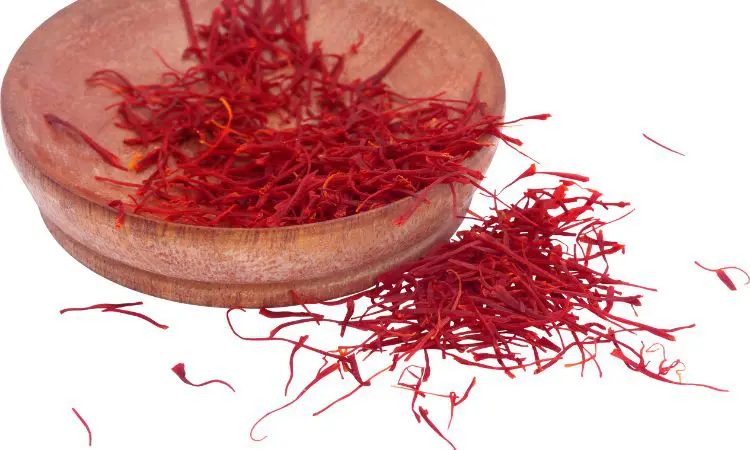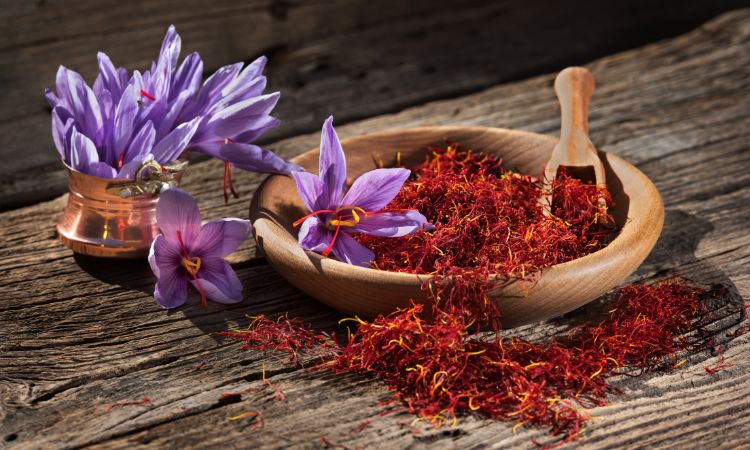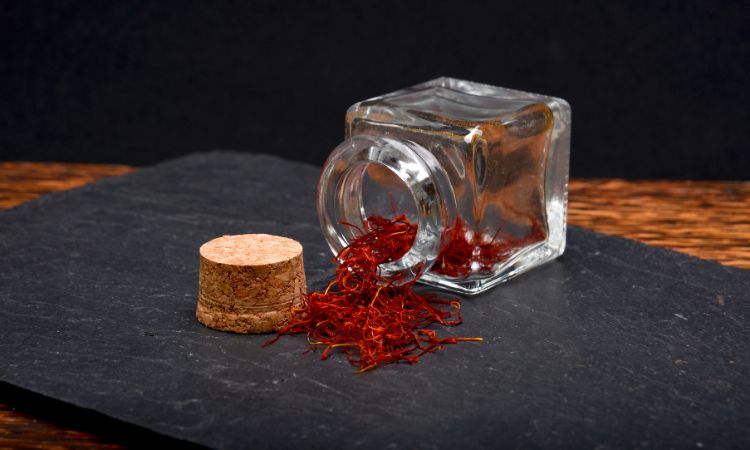Ever wondered how to make your sauces stand out? The secret is saffron, the world’s most precious spice. Its golden threads add a unique flavor that can change a dish. This adds a sophisticated touch that will amaze your taste buds.
So, what makes saffron so special in cooking? Let’s explore its origins and unique qualities. We’ll see how it can make your sauces even more flavorful.
Key Takeaways on Saffron Sauce Recipes
- Saffron is the world’s most expensive spice, yet a little goes a long way in enhancing the flavor and aroma of sauces.
- Proper preparation techniques, such as blooming saffron in hot or cold liquid, are crucial for unlocking its full potential.
- Saffron’s subtle floral and earthy notes can complement a wide range of cuisines, from Mediterranean to Middle Eastern.
- Incorporating saffron into creamy sauces, seafood dishes, and even vegan recipes can elevate the overall taste experience.
- Saffron-infused sauces offer potential health benefits, including anti-inflammatory and antioxidant properties.
Understanding Saffron: The World’s Most Precious Spice
Saffron is a rare spice that has won the hearts of food lovers everywhere. It comes from the delicate stigmas of the Crocus sativus flower. This spice is known for its complex flavor and ability to make simple dishes special. It’s grown in places like Iran and Spain, where it’s carefully harvested.
Origins and Cultivation
Saffron’s history goes back thousands of years. It was first grown in ancient Persia and Greece. Now, Iran grows most of the world’s saffron, making up over 90% of it. Other places like Spain, Greece, Morocco, and India also grow saffron, each with its own way of doing it.
Flavor Profile and Characteristics
Saffron’s flavor is unique, with notes of floral, earthy, and slightly bitter. It adds a golden-yellow color and a subtle aroma to dishes. This makes even simple meals special. Its flavor is like a mix of hay, honey, and cinnamon, making it great for both savory and sweet dishes.
Quality Indicators and Selection Tips
When picking saffron, look for certain signs to get the best quality. Good saffron is deep red and has a strong smell. Stay away from yellow or orange saffron, as it might be lower quality. Saffron can cost between $10 to $13 per gram because it’s hard to get. To keep saffron fresh, store it in an airtight container in a cool, dark place.
| Saffron Quality Indicators | Description |
|---|---|
| Color | Deep, vibrant red |
| Aroma | Strong, distinctive floral and earthy notes |
| Texture | Whole, unbroken saffron threads |
| Origin | Iran, Spain, Greece, Morocco, or India |
“A small amount of saffron can go a long way in enhancing the flavor of dishes, with low double digits representing a feasible cost for this luxurious ingredient.”
By knowing what makes saffron special, you can use it to make your dishes stand out. It’s a way to add depth and beauty to your cooking.
The Science Behind Saffron’s Flavor Enhancement
Saffron, the world’s most precious spice, has a unique flavor. This comes from two main compounds: crocin and safranal. Crocin gives saffron its bright color. Safranal is what makes it smell so good.
When saffron is added to food, these compounds mix with other flavors. This makes the dish taste better. The steeping process lets these saffron flavor compounds spread through the food. This creates a unique taste experience.
“Saffron’s ability to enhance and elevate the flavors of a dish is truly remarkable. It’s a spice that can transport your senses to another world.”
Saffron’s makeup also has health benefits. The saffron aroma compounds can improve mood and have antioxidant and anti-inflammatory effects.
As chefs and home cooks explore saffron, the science behind its flavor is fascinating. Understanding its compounds helps us create dishes that amaze the senses.
Essential Tips for Preparing Saffron in Sauces
Saffron is the world’s most expensive spice and a true culinary treasure. It can turn a simple sauce into a flavorful masterpiece. To get the most out of saffron, knowing how to prepare it is key. Let’s explore the secrets to making saffron sauce a success!
Blooming Techniques
The secret to saffron’s flavor is in the blooming process. Before adding it to your sauce, soak the threads in hot water or warm cream for 10-15 minutes. This releases the essential oils, boosting the spice’s aroma and color. For cold recipes, crush the saffron and bloom it in crushed ice.
Proper Dosage Guidelines
- When using saffron, a little goes a long way. Use about 1/4 teaspoon of threads per cup of liquid in your sauce.
- For a stronger flavor, grind the saffron threads into a fine powder before adding them.
- Remember, saffron is a strong spice. Too much can overwhelm your dish. Start with a small amount and adjust as needed.
Common Mistakes to Avoid
- Improper storage: Keep saffron in an airtight container, away from light and heat, to preserve its flavor.
- Overcooking: Saffron’s delicate flavor can be lost if the sauce is cooked too long. Add it towards the end for the best taste.
- Skipping the bloom: Not blooming the saffron can lead to a dull flavor and color in your sauce.
“Saffron is the key to elevating your sauces to new heights. With a little care and attention, you can unlock its magical properties and create truly remarkable flavors.”
Best Saffron Sauce Recipes for Every Occasion
Discover the amazing smell and bright color of saffron in your sauces. These recipes show how saffron can make your food even better. Try the classic Saffron Cream Sauce or the bold Saffron Tomato Sauce. Our saffron sauce recipes will make your taste buds happy.
Saffron is the most expensive spice, but a little can make a big difference. Mix it with lemon zest, shallots, or cherry tomatoes for something special. This way, you can make your own unique saffron sauce.
For vegans, we have tasty saffron sauce options. Use creamy cashews or coconut to make your pasta, seafood, chicken, and veggies taste amazing.
Saffron Sauce Varieties to Try
- Saffron Cream Sauce – A luxurious and silky sauce that pairs beautifully with seafood, chicken, and pasta.
- Saffron Butter Sauce – A rich and decadent sauce that adds a touch of elegance to grilled meats and vegetables.
- Saffron Tomato Sauce – A bright and tangy sauce that complements a wide range of dishes, from pasta to roasted vegetables.
| Sauce | Key Ingredients | Suggested Pairings |
|---|---|---|
| Saffron Cream Sauce | Saffron threads, heavy cream, butter, garlic, Parmesan cheese | Pasta, seafood, chicken, vegetables |
| Saffron Butter Sauce | Saffron threads, butter, lemon juice, white wine | Grilled meats, fish, roasted vegetables |
| Saffron Tomato Sauce | Saffron threads, tomato purée, white wine, garlic, olive oil | Pasta, chicken, fish, roasted vegetables |
Saffron’s unique flavor and aroma can make many dishes better. Try our saffron sauce recipes to make your food stand out. Impress your guests with the luxurious touch of this precious spice.
Pairing Saffron Sauces with Different Cuisines
Saffron’s aroma and color are perfect for many global cuisines. It adds depth to Mediterranean and Middle Eastern dishes. This spice can make traditional meals exciting and new.
Mediterranean Delights
In the Mediterranean, saffron is a treasured ingredient. It makes paella and risotto alla milanese special. These dishes get a golden color and unique taste from saffron.
Middle Eastern Specialties
Saffron is a great match for Middle Eastern flavors. It makes tagines richer and adds to Persian rice dishes like chelo and polo. These dishes become even more delicious with saffron.
Modern Fusion Applications
Saffron works well with many cuisines, leading to new dishes. Think of saffron beurre blanc with sushi or velouté with modern European food. Saffron’s flavor can make any dish fancy and sophisticated.
Saffron is a key ingredient in global cuisine. It makes saffron in global cuisines and saffron fusion dishes even more tasty. Its rich flavors take your cooking to the next level.
Creating Creamy Saffron-Based Pasta Sauces
Saffron, the world’s most expensive spice, can turn simple pasta dishes into something special. It adds a vibrant golden color and a sweet, floral aroma. This makes your pasta, like fettuccine or linguine, taste even better.
To make a rich saffron pasta sauce, start by soaking a small amount of saffron in hot water. Then, mix the saffron liquid with heavy cream, Parmesan cheese, and a bit of white wine. This creates a creamy, velvety sauce.
For more flavor, sauté garlic and shallots in butter before adding the cream mixture. This step adds savory notes that blend well with the other flavors. Finally, toss the cooked pasta in the sauce. This coats the pasta with the sauce’s vibrant color and aroma.
Saffron pasta sauces are very versatile. You can add fresh vegetables like asparagus or peas for extra nutrition. Or, use milk instead of heavy cream and add lemon juice for a lighter version.
Try a saffron pasta sauce or explore creamy saffron recipes to improve your cooking. You’ll impress your guests with a memorable meal.
| Ingredient | Quantity |
|---|---|
| Saffron threads | 1 pinch |
| Hot water | 1/3 cup |
| Heavy cream | 1/3 cup |
| Dry white wine | 1/3 cup |
| Unsalted butter, divided | 3 tablespoons |
| Garlic, minced | 2 cloves |
| Shallot, minced | 1 small |
| Grated Parmesan cheese | 6 tablespoons |
| Pasta of choice | 10 ounces |
This saffron pasta sauce recipe serves 4 and is ready in 15 minutes. It’s a quick, indulgent meal. The mix of heavy cream, Parmesan cheese, and saffron makes a luxurious sauce. Enjoy the unique flavors of this dish for a special culinary experience.
Seafood and Saffron: Perfect Sauce Combinations
Saffron sauces and seafood are a culinary dream team. The floral notes of saffron enhance the natural flavors of fish and shellfish. This creates a perfect balance that will make your taste buds happy. Whether it’s grilled salmon, seared scallops, or poached trout, saffron-infused sauces are the ideal match.
Fish and Shellfish Pairings
Saffron sauces go great with many seafood choices, including:
- White fish like cod, halibut, and tilapia
- Oily fish such as salmon, trout, and mackerel
- Shellfish like shrimp, scallops, and mussels
Classic Seafood Sauce Recipes
Enhance your seafood dishes with these classic saffron sauce recipes:
- Saffron Aioli: A creamy, garlic-infused sauce that complements grilled or roasted fish perfectly.
- Saffron Beurre Blanc: A classic French butter sauce that pairs beautifully with poached seafood.
- Saffron-Lemon Butter Sauce: A bright and tangy sauce that enhances the flavors of pan-seared or baked fish fillets.
To get the most out of saffron in these sauces, gently bloom it in hot liquid first. This step lets the spice’s complex flavors and aromas fully develop. It makes for a memorable dining experience.
Vegan and Vegetarian Saffron Sauce Alternatives
Make your vegan and vegetarian dishes pop with saffron! This precious spice is not just for meat-based sauces. You can make tasty plant-based sauces with just a few ingredients.
Try a creamy cashew-based sauce for a vegan option. Blend soaked cashews with saffron, plant-based milk, garlic, and lemon juice. It’s perfect for roasted veggies, pasta, or as a dip. Add nutritional yeast for a cheesy flavor.
For a dairy-free saffron hollandaise, use coconut milk. It’s ready in 20 minutes and serves 10. It’s great for brunch or as a topping for steamed veggies and baked potatoes.
Want to add saffron to your pasta? Our Creamy Saffron Vegetable Pasta is a hit. It’s ready in 30 minutes and has a rich saffron flavor.
When making vegan or vegetarian saffron sauces bloom the saffron first. This brings out its aroma and color, making your dishes even more flavorful.
| Dish | Servings | Prep Time | Cook Time | Total Time |
|---|---|---|---|---|
| Vegan Saffron Hollandaise | 10 | 5 minutes | 15 minutes | 20 minutes |
| Creamy Saffron Vegetable Pasta | 6 | 10 minutes | 40 minutes | 50 minutes |
| Saffron Lentil Stew | 6 | 10 minutes | 40 minutes | 50 minutes |
Explore vegan saffron sauce and vegetarian saffron recipes to spice up your dishes. Saffron’s vibrant colors and complex flavors will take your cooking to the next level.
Storage and Preservation of Saffron-Infused Sauces
Keeping saffron-infused sauces vibrant and flavorful is key. This ensures your dishes stay as exciting as the first time. To store saffron sauce right, just follow these easy steps:
Proper Storage Methods
For up to 3 days, keep saffron sauces in the fridge in airtight containers. To keep them longer, freeze them in ice cube trays. This makes reheating easy. But, don’t store them near strong-smelling foods, as they can pick up bad smells.
Shelf Life Guidelines
In the fridge, saffron sauces stay fresh for 3-4 days. For longer preservation of saffron sauces, freezing is best. They can be frozen for up to 2 months. Just reheat them gently to keep the saffron’s taste and color.
“Saffron, the most expensive spice in the world, is harvested by hand during a short blooming period, mostly grown in Iran and commonly used in Middle Eastern, South Asian, and Mediterranean cooking.”
By using these simple storage tips, you can enjoy saffron’s rich flavor in your sauces for a long time. This unlocks the full beauty of this precious spice.
Conclusion
Saffron is a versatile spice that can make any sauce or dish better. It has a rich history and a complex flavor. This makes it a must-have for anyone who loves cooking.
Learning how to use saffron can open up new cooking possibilities. You can make creamy pasta sauces, pair them with seafood, or try vegan and vegetarian dishes. The options are endless.
Proper storage and preservation are key to enjoying saffron’s full flavor. By following the right techniques, your dishes will stay vibrant and flavorful. So, let your creativity shine, and explore the world of saffron culinary uses and saffron cooking tips in your kitchen.
FAQ
What is saffron cream sauce?
The saffron cream sauce is rich and flavorful. It’s made by adding saffron threads to cream. This gives it a golden color and a unique taste. It’s great with pasta, seafood, chicken, and vegetables.
What makes saffron so expensive?
Saffron is the most expensive spice. It comes from the stigma of the Crocus sativus flower. Harvesting it is very labor-intensive.
What are the key compounds in saffron that contribute to its flavor?
Saffron has crocin, which gives it its color, and safranal, for its aroma. These compounds mix with other ingredients. They make the flavors more intense and create a special taste.
How should saffron be prepared for use in sauces?
To prepare saffron, bloom it in hot water or cream for 10-15 minutes. For cold recipes, use crushed ice. Grind the threads into powder for a stronger flavor. Use about 1/4 teaspoon of saffron threads per cup of liquid.
What are some popular saffron sauce recipes?
Some popular saffron sauce recipes include Saffron Cream Sauce, Saffron Butter Sauce, and Saffron Tomato Sauce. These sauces are versatile. They go well with pasta, seafood, chicken, and vegetables.
How can saffron sauces be incorporated into different cuisines?
Saffron sauces are great with Mediterranean dishes like paella and risotto. In Middle Eastern cuisine, they enhance tagines and rice dishes. Try them with sushi or in modern European dishes for a fusion twist.
How can vegan saffron sauces be made?
Vegan saffron sauces can be made with plant-based cream or milk alternatives, like cashew cream. Nutritional yeast adds a cheesy flavor to vegan saffron “cheese” sauces.
How should saffron-infused sauces be stored?
Store saffron-infused sauces in airtight containers in the fridge for up to 3 days. Freeze them in ice cube trays for longer storage. Avoid storing them with strong-smelling foods to prevent odor absorption.


